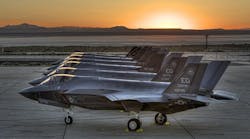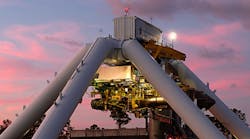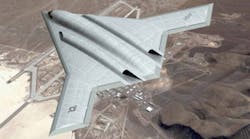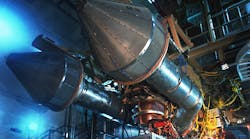Lockheed Martin, Northrop Grumman, and BAE Systems agreed to meet new lower-cost targets set by the U.S. Department of Defense for the F-35 Lightning II jet fighter, the stealth-enabled aircraft now in the initial production and testing phase, for introduction late next year. DoD said the agreement, which is called “The Blueprint for Affordability,” would reduce the price of each F-35 to match its equivalent aircraft in today’s arsenal — notwithstanding the various technological advances to be included in the F-35.
“This is a significant change in business approach within the F-35 program,” stated program executive officer Lt. Gen. Chris Bogdan. “Industry partners will make an upfront investment into cost cutting measures that the government and taxpayers will reap benefits from by buying F-35s at a lower cost.
The F-35 Lightning II is a single-engine fighter that will be capable of ground attack, reconnaissance, and air defense missions by the U.S. Air Force, U.S. Navy, U.S. Marine Corps, and the U.K. Royal Air Force. It is to be available in three variants: the F-35A for conventional takeoff and landing; the F-35B for short takeoff and vertical landing; and the F-35C for carrier-based operations.
According to data published by Lockheed Martin, the primary contractor for the F-35 program, the most recent unit costs for the jets range from $98 million for each F-35A, to $104 million for each F-35B, to $116 million for F-35C. “An F-35A purchased in 2018 and delivered in 2020 will be $85 million, which is the equivalent of $75 million in today’s dollars,” according to Lockheed.
Lockheed, Northrop Grumman and BAE Systems together intend to invest up to $170 million through 2016 in efforts that are projected to reduce the F-35 average cost per jet to about $80 million.
While Lockheed is the primary contractor for the F-35, performing basic and detail design and major construction, BAE produces the aft fuselage, tails, fins, electronic warfare system, and other sub-systems for the jets. Northrop Grumman’s contributions include the electro-optical targeting system (EOTS).
Turbofan jet engines for the F-35 are developed and built by Pratt & Whitney, which is not included in the Blueprint for Affordability
The Lockheed/Northrop/BAE agreement is based upon the U.S. government’s Better Buying Power 2.0 initiative, which directs defense contractors and the government acquisition agencies to determine new ways to reduce the cost of goods and services.
“By 2019, we expect that the F-35 with its unprecedented 5th generation capability will be nearly equal in cost to any other fighter on the market, but with far more advanced capability,” Bogdan added.
In the future, the government is looking at similar ways to drive down the costs of operating and sustaining the F-35.
“We are taking these unprecedented measures in support of our customers’ affordability challenges,” according to Lockheed’s Lorraine Martin, executive vice president and general manager, F-35 Program. “We have total faith in the F-35 to support the U.S. and our allies’ future defense needs. Our industry team knows what is at stake given the current budgetary and global security demands to reach these cost milestones.”










